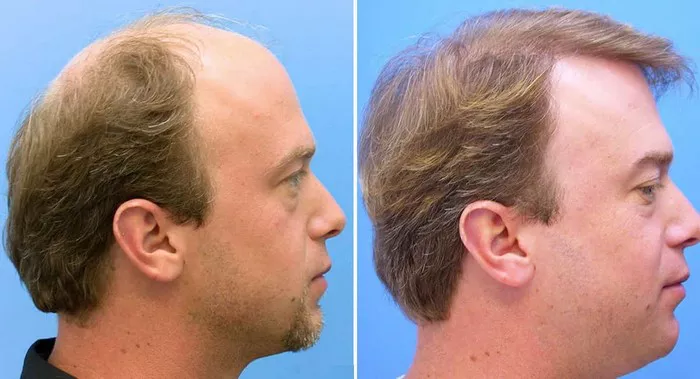Embarking on a hair transplant journey is a significant decision that often comes with high hopes for a fuller, more youthful head of hair. However, some individuals may find themselves facing the disheartening reality of patchiness even after one year post-surgery. In this article, we delve into the potential reasons behind a patchy hair transplant outcome and explore ways to address and overcome this challenge.
Understanding the Hair Growth Cycle:
To comprehend why a hair transplant may appear patchy after one year, it is essential to grasp the natural hair growth cycle. Hair follicles go through distinct phases, including anagen (growth), catagen (transition), and telogen (rest). The transplanted hair initially sheds after the surgery, entering a temporary resting phase before regrowth begins. The final result is often not fully apparent until several months to a year after the procedure.
Patient Variability in Hair Growth:
Individuals undergoing hair transplant surgery exhibit significant variability in the rate and pattern of hair growth. While some may experience swift and uniform regrowth, others may encounter delays, leading to perceived patchiness. Patient-specific factors, including genetics, overall health, and adherence to post-operative care, can influence the speed and success of the transplanted hair’s regrowth.
Incomplete Graft Survival:
One common reason for patchiness post-transplant is the incomplete survival of transplanted grafts. Despite meticulous transplantation procedures, not all grafts may thrive in their new environment. Factors such as graft quality, handling during transplantation, and recipient site conditions can impact graft survival rates. In cases where grafts fail to establish a blood supply and anchor securely, patchy or sparse areas may become apparent.
Shock Loss and Temporary Shedding:
Another factor contributing to patchiness in the first year post-transplant is shock loss. This is a temporary shedding of existing hair in both the donor and recipient areas due to the trauma of the surgery. While this shedding can be alarming, it is a normal part of the healing process. The transplanted follicles then enter a resting phase before regrowing, contributing to the delayed appearance of the final results. Patience and understanding are crucial during this phase.
Natural Hair Characteristics:
The natural characteristics of an individual’s hair can also impact the perceived patchiness after a transplant. Hair texture, color, and thickness may vary across the scalp, and the transplant’s aesthetic outcome may be influenced by these inherent qualities. Factors such as hair curliness, for instance, can contribute to a perception of unevenness, even when the grafts have successfully taken root.
Underlying Medical Conditions:
Undiagnosed or untreated medical conditions can interfere with the success of a hair transplant. Conditions such as alopecia areata or underlying scalp disorders may compromise the transplanted hair’s ability to thrive. Additionally, hormonal imbalances or nutritional deficiencies can affect overall hair health, potentially leading to uneven regrowth patterns.
Post-Operative Care and Follow-Up:
Adherence to post-operative care instructions is paramount in ensuring the success of a hair transplant. Failure to follow prescribed care routines, including gentle washing, avoiding trauma to the transplanted area, and taking prescribed medications, can negatively impact the growth and survival of transplanted hair. Regular follow-up appointments with the surgeon allow for timely assessment and intervention if any issues arise.
Addressing Patchiness:
For individuals experiencing patchiness after one year, consulting with the transplant surgeon is the first step. A thorough evaluation can help identify the specific factors contributing to the uneven outcome. In some cases, a touch-up procedure may be recommended to address areas of patchiness and enhance overall density. However, it is crucial to set realistic expectations, as complete uniformity may be challenging to achieve.
See Also: Does FUE Hair After Transplant Look Natural: A Full Guide
Conclusion:
While a patchy hair transplant outcome after one year can be disheartening, understanding the diverse factors influencing hair growth and graft survival is crucial. Patient variability, shock loss, natural hair characteristics, medical conditions, and post-operative care all contribute to the final result. Seeking guidance from a qualified hair transplant specialist, maintaining patience, and following post-operative care instructions diligently are key elements in addressing and overcoming patchiness, ultimately leading to a more satisfying and natural-looking outcome.


